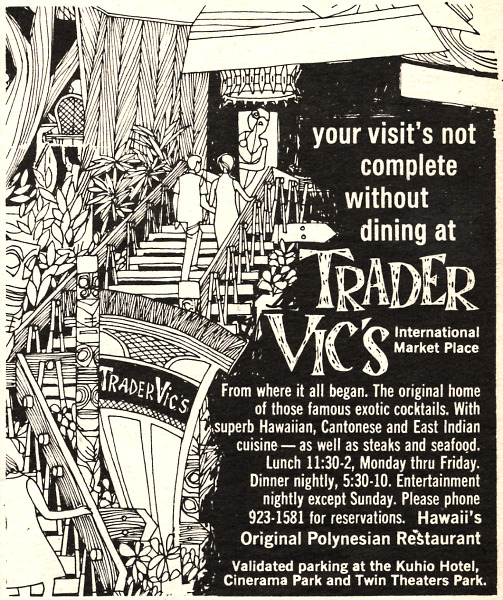June 28, 1914, Archduke Franz Ferdinand, heir to Austria-Hungary’s throne, and his wife, Sophie, were visiting Sarajevo; Serbian nationalist Gavrilo Princip assassinated the couple. A month later, Austria-Hungary declared war on Serbia.
Within days, other countries got into the fray, including, Germany, Russia, France and United Kingdom; US President Woodrow Wilson announced the US would remain neutral.
Long before the US entered the war a number of men from Hawaiʻi had entered the Army and Navy. The preparedness movement of 1915 and 1916 and the creation of Army units stimulated the enlistments. When the US was actually in the war, the local interest increased.
“By a curious irony, the very first men who left Hawaiʻi for the battlefields of Europe were a couple of German reservists who sailed from Honolulu during the first week of August, 1914, but were captured by the British before they got across the Atlantic.” (Kuykendall)
On April 6, 1917, two days after the US Senate voted 82 to 6 to declare war against Germany, the US House of Representatives endorsed the decision by a vote of 373 to 50, and the US formally entered the First World War.
At the time, the US Army was comparatively small. On May 18, 1917, the Selective Service Act was passed authorizing the President to increase temporarily the military establishment of the US. The Selective Service System was responsible for the process of selecting men for induction into the military service, from the initial registration to the actual delivery of men to military training camps.
It was a “supervised decentralization.” Folks in Washington were responsible for formulating policy; Governors of the 48 states, the District of Columbia and the territories of Alaska, Hawaiʻi and Puerto Rico managed the operation of drafting men for military service.
Local boards were established for each county or similar subdivision in each state, and for each 30,000 persons (approximately) in each city or county with a population over 30,000.
4,648 local draft boards were spread across the country; they were responsible for registering men, classifying them, taking into consideration needs for manpower in certain industries and in agriculture, as well as other deferments, determining the order in which registrants would be called, calling registrants and getting them to training centers.
There were three registrations. The first, on June 5, 1917, was for all men between the ages of 21 and 31. The second, on June 5, 1918, registered those who attained age 21 after June 5, 1917.
A supplemental registration was held on August 24, 1918, for those becoming 21 years old after June 5, 1918. This was included in the second registration. The third registration was held on September 12, 1918, for men age 18 through 45. (archives-gov)
The operation of the Selective Service System in Hawaiʻi was different from its operation throughout the rest of the country. First of all, Hawaiʻi was not required to furnish any men for the first draft in 1917. For subsequent calls, Hawaiʻi adopted its own process. (Kuykendall)
The order numbers for Hawaiʻi’s registrants were not determined by the drawings held in Washington, but by special drawings held in Honolulu.
For Hawaiʻi, President Wilson, on recommendation of Governor Pinkham, named July 31, 1917 as Registration Day, and on that day all men in the territory between the ages of 21 and 30, both inclusive, except members of the National Guard and those in regular service, were required to appear at their draft board.
In order to insure a complete registration, an extensive publicity campaign was carried on. The President’s proclamation was translated into Japanese, Chinese, Korean, Portuguese, Spanish, Hawaiian and the three Filipino dialects of Visayan, Ilocano, and Tagalog.
At the close of the day it was found that 26,335 men had registered in the six districts of the territory. With the addition of late registrants (including National Guardsmen, who were not at first required to register) the number amounted to more than 27,000. (July 31, 1917)
The first number, 16, was drawn by Governor Pinkham shortly before 9 o’clock in the morning. This meant that the six men in Hawaiʻi having the serial number 16 would be the first called for service in this territory, unless they were exempted. The drawing was then continued by Boy Scouts in relays. (For Hawaiʻi’s second call (July 31, 1918,) the number who registered was less than 2,500.)
Over twenty-four million American men registered for the draft for the First World War in 1917 and 1918. (In 1918, the Supreme Court ruled that the World War I draft did not violate the United States Constitution in the Selective Draft Law Cases. The Court summarized the history of conscription in England and in colonial America, noting the Framers envisioned compulsory military service as a governmental power.)
Over 10,000 men and women from the Territory of Hawaiʻi served in “the Great War,” “The war to end all wars.”
OK, other than a slight modification in the selective service selection process, that’s pretty straight forward; was there any other quirk in the Hawaiʻi process?
Well, yes.
In reviewing World War I service records, one of the categories on the standard form is “Race: White or Colored”. It seems that some Hawaiians who served in WWI were noted as “Hawaiian;” however, there are others who were identified as “White” on their service cards.
In reviewing some Hawaiian sounding surnames, such as Kaai – some of the men with last names Kaai were noted as “Hawaiian” on their service records, while others were labeled “White.” (Check out the album images.)
A notable Hawaiian surname is Kahanamoku; however, Duke didn’t serve in the military in WWI (reportedly, he served training Red Cross volunteers in water lifesaving techniques and toured the nation with other American aquatic champions to raise funds for the Red Cross.)
But, Duke’s younger brother, David, did. David’s WWI military service card notes his race as “White.” (Hawaiʻi State Archives.) (Lots of information here from US Archives, Hawaiʻi Archives and Kuykendall.)
















































